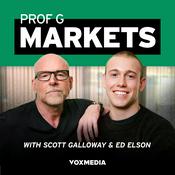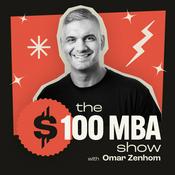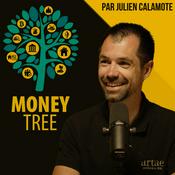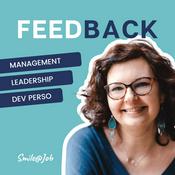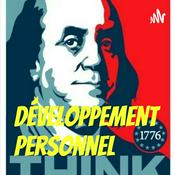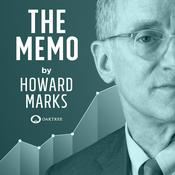Épisodes disponibles
5 sur 39
- What the energy transition looks like from inside the gridFrom 2007 to 2016, Steve Holliday was the CEO of the UK’s National Grid. In that time, the share of electricity generated by renewables in the UK grew from 3% to 16%. Today, that number is close to 40%.Rebecca and Joe talk to Steve about his time leading the National Grid through the beginning of the energy transition. They also get Steve’s perspective on some of the big questions around the future of the grid, including:The untapped potential of demand response and virtual power plants;Grid-scale batteries and the persistent issue of long-term storage;The role of nuclear in a fully green grid; andWhether AI will be a net benefit for the grid.About our guest: Steve Holliday is the former Chief Executive of National Grid plc. He is currently Chairman of Zenobe and Cityfibre. Steve joined National Grid Group as the Board Director responsible for the UK and Europe in March 2001, becoming Chief Executive of the company in January 2007, which he led for almost 10 years, until 2016. Steve is a Fellow of both the Royal Academy of Engineering and the Energy Institute. He holds a BSc degree from Nottingham University and honorary doctorates from Nottingham and Strathclyde universities. His sporting interests include cycling and following the fortunes of the England Rugby team.A transcript is available on the episode's webpage.Subscribe to our biweekly newsletter. Visit our website. Follow us on LinkedIn.--------40:58
- How a mine actually worksPreston Miller, a veteran of the mining industry, explains why mining companies need to invest in a comprehensive digital twin. We also explore the operational challenges faced by miners and how technology is poised to transform the industry. About our guestPreston Miller, a professional mining engineer with decades of experience, is a leader in mining technology innovation. In his previous roles he pioneered digital twins, AR/VR, and AI, building scalable data systems and automated reporting tools that delivered millions of dollars in value. His work enhances operational efficiency and decision-making. Holding an MBA from Arizona State University and a Lean Six Sigma Black Belt, Preston is passionate about advancing industrial digital twins and the metaverse, transforming mining operations through cutting-edge, sustainable technology solutions that drive operational excellence.https://www.aveva.com/en/our-industrial-life/type/podcast/welcome-to-the-mining-metaverse/Subscribe to our biweekly newsletter. Visit our website. Follow us on LinkedIn.--------31:40
- XR training and the future of industrial workAttempts to meld virtual spaces and physical reality so far have struggled to take hold. For all the ingenuity behind projects like Google Glass, the metaverse, and the Apple Vision Pro, they’ve often felt like technologies in search of a purpose. Professor Nick Kelling, an engineer turned researcher, may have found one. Rebecca and Joe spoke to him about the limitations and possibilities of extended reality in the industrial sector. About our guestNick Kelling is a Professor of Human Factors Psychology at the University of Houston-Clear Lake. His research focuses on the use of VR/XR/AR technologies for training psychomotor skills and the use of technology in environments where education and entertainment goals coexist. In his nearly two decades of research, he has collaborated with college athletics, computing and aerospace companies, amusement parks, zoos, and NASA. Nick is an author of more than 30 published works within education, human factors, and engineering receiving multiple grants from the US National Institute of Health and NASA.Subscribe to our biweekly newsletter. Visit our website. Follow us on LinkedIn.--------34:50
- How to handle the coming e-waste avalancheCritical minerals are key to green technologies, but their supply is dominated by a small number of countries. Recycling could, in theory, open up a new source of supply of these minerals—but that too is dominated by a small number of countries. Rebecca and Joe talk to Megan O’Connor, CEO and co-founder of Nth Cycle. The start-up's Oyster system has the potential to transform the recycling business. Subscribe to our biweekly newsletter. Visit our website. Follow us on LinkedIn.--------31:25
- Your life is manufacturedRebecca and Joe talk to Dr Tim Minshall, the Dr John C Taylor Professor of Innovation and Head of the Institute for Manufacturing at the University of Cambridge, about his new book, Your Life Is Manufactured: How We Make Things, Why It Matters and How We Can Do It Better.They discuss why “supply chain” is a misnomer, how SMEs can begin their digitalization journey, a useful prism through which to think about reshoring—and a whole lot more.Buy Your Life Is Manufactured: Waterstones / Blackwells / Faber / Amazon. Follow Tim on LinkedIn. Visit the Institute for Manufacturing’s website. Subscribe to our biweekly newsletter. Visit our website. Follow us on LinkedIn.--------32:19
Plus de podcasts Business
Podcasts tendance de Business
À propos de Our Industrial Life
We investigate how data and technology are shaping the present and future of the industrial economy. Join hosts Rebecca Ahrens and Joe Renshaw as we talk with experts from critical industries—from water and power to manufacturing, pharmaceutical production, and beyond—about the cutting-edge industrial technologies that are changing how engineers keep the everyday parts of life running.
Site web du podcastÉcoutez Our Industrial Life, Finary ou d'autres podcasts du monde entier - avec l'app de radio.fr
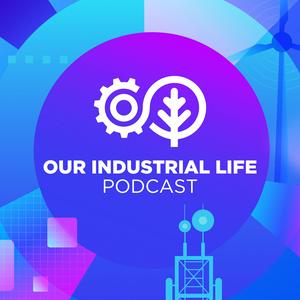
Obtenez l’app radio.fr gratuite
- Ajout de radios et podcasts en favoris
- Diffusion via Wi-Fi ou Bluetooth
- Carplay & Android Auto compatibles
- Et encore plus de fonctionnalités
Obtenez l’app radio.fr gratuite
- Ajout de radios et podcasts en favoris
- Diffusion via Wi-Fi ou Bluetooth
- Carplay & Android Auto compatibles
- Et encore plus de fonctionnalités


Our Industrial Life
Scannez le code,
Téléchargez l’app,
Écoutez.
Téléchargez l’app,
Écoutez.











